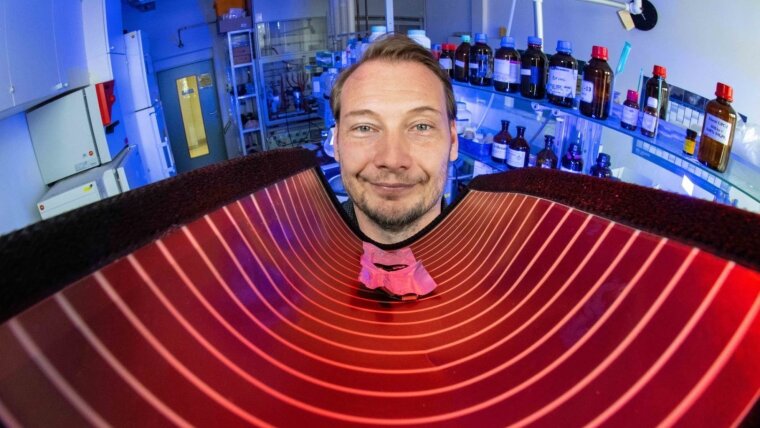
- Light
Published: | By: Ute Schönfelder
Source article
The “FuncHeal” project of the University of Jena has been awarded funding by the German Research Foundation worth more than 3.5 million euros over the next four years. The consortium, led by Prof. Ulrich S. Schubert, includes researchers from three institutes of Friedrich Schiller University Jena in a total of six subprojects. FuncHeal will work on “the next generation of self-healing materials – restoring electronic, optical and transport properties in soft materials for energy storage and conversion”. The aim is to develop a new generation of self-healing materials, which can not only repair mechanical damage, but also restore functional properties. The new research unit will start its work this April.
Materials developed by the new Jena research unit are to be used primarily in flexible energy storage and conversion materials. “The challenge here is the complexity and composition of the materials, as they consist of not just one but a multitude of different components,” says chemist and materials researcher Schubert. Unlike in previous approaches to self-healing materials, the aim is not only to heal cracks and other types of mechanical damage, he adds. “It should also be possible to restore functions and properties in a targeted manner, for example the conductivity of electrode materials in batteries or the optical properties of organic solar cells.”
For example, organic, flexible solar cells (photo) are damaged by incident light over time, so that they are no longer able to convert solar radiation into electricity. In the FuncHeal project, the researchers in Jena want to find ways of ensuring that the molecular structure of the active materials in the solar cells is restored, so that they regain their functionality.
While numerous approaches to self-healing materials such as polymers, asphalt, concrete or metals have been established in the past 20 years, research on self-healing functional materials is still in its infancy. In order to be successful in this venture, the new research group is relying on expertise from various fields. For example, the consortium includes researchers from the fields of materials science, experts in batteries and supercapacitors as well as solar cells and functional dyes. In addition to producing functional materials, they plan to gain a detailed molecular understanding of the processes that take place during damage and healing. They want to use a broad spectrum of methods in this work – from spectroscopic investigations to theoretical calculations.
You can find further information on the new research group and self-healing materials at: https://www.schubert-group.uni-jena.de/en/what-we-do